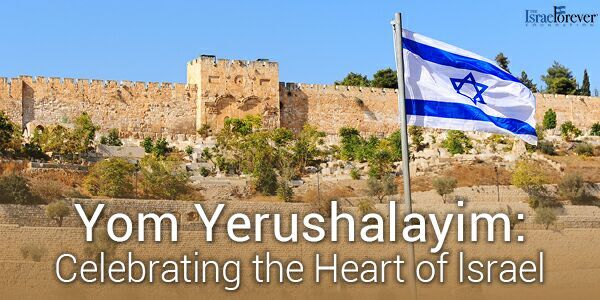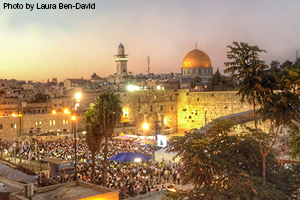The IDF Liberates Jerusalem: A Look Back
For the Jewish people, Jerusalem is our holiest site.
Jerusalem was divided during the War of Independence and nineteen years later was reunited as a result of the 6-Day War.
The battle of Jerusalem began on the morning of June 5, 1967 when the Jordanians opened fire along the entire cease-fire line. By that afternoon the Jordanians occupied the Governor's Palace.
The Central Command of the Israeli Army, under the command of General Uzi Narkiss, moved the "Har'el" brigade to the Jerusalem front. This force tore through the enemy positions of "Har Adar" and "Abdul Aziz" and conquered "Nebi Samuel".
By the morning of June 6 this force reached the Jerusalem-Rammalah road and stormed "Tel-El" and "Givat HaMivtar". In addition a paratroop brigade was moved up. Its instructions were to open the way to Mount Scopus and the Rockefeller Museum in order to position themselves to break through to the "Old City" of Jerusalem on very short notice.
This force cut through the frontline of the town and occupied the Police Academy, Ammunition Hill, Mandelbaum Gate, the American quarter and "Wadi Jos". The way to Mount Scopus was now cleared and the northeast section of Jerusalem was liberated.
On June 7th the General Staff issued the order to liberate the "Old City". The Central Command activated the paratroop brigade that had conquered the Mount of Olives and the Mount Scopus ridge. These troops broke through to the "Old City" by way of the "Lions' Gate" and hoisted the Israeli flag over the "Western Wall" (the last surviving remnant of the Second Temple).
Following the 6-Day War victory, on June 27, 1967, the Government presented the Knesset with three law proposals. These proposals determined the effective unification of Jerusalem and sanctioned the application of Israeli law in the entire area of the unified city.
The municipal boundaries of the city were altered and its area was increased threefold: from 38,100 dunams to 110,000 dunams. At the same time a law was adopted that enabled free access to the holy places by the members of every religion. In 1980, the Basic Law: Jerusalem was adopted. This law determined that Jerusalem was the capital of Israel and the location of all state authorities.
On May 12 1968 the Israeli Government, decided to make the 28th of Iyar the symbolic holiday, Jerusalem Day , a day that symbolizes the continued historical connection of the Jewish People to Jerusalem. Thirty years later, this holiday became anchored in the law: On March 23 1998 the Knesset passed the second and third readings of the "Jerusalem Day Law", which determined that the date that Jerusalem was liberated during the 6-Day War was now a national holiday.
After the 6-Day War the city and its environs underwent an intensive and unprecedented process of restoration and development. Institutions were built, entire new neighborhoods were established and an extensive system of roads and transportation infrastructure was constructed.
Jerusalem, the capital of Israel, has become a large and expansive city. It stands as an inspiration not only to residents of Israel and the Jewish People but also to the entire world. Jerusalem attracts tourists from around the world who come to see her beauty, to soak in its past and make a pilgrimage to the holy sites, which serve as a place for prayer and a connecting point for the members of all three major religions.
Ten new neighborhoods were built on 21,000 dunams. This development enabled a significant increase in Jerusalem's population and the absorption of considerable numbers of new immigrants. In December 2012 Jerusalem's population stood at 815,300 people, including 515,200 Jews and 300,100 Arabs. It is currently the largest city in Israel and continues to grow and embrace its many citizens of all faiths, ethnicities and origins.




